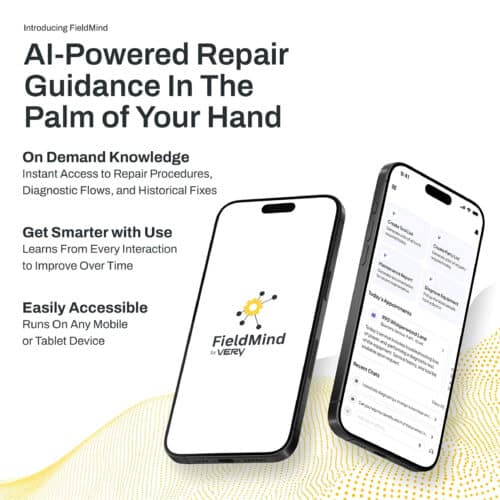BLOG
NFC and IoT: What You Need to Know
Have you ever wondered about the science behind tap-and-go technologies like Apple Pay and contactless credit cards? In many cases, these services are powered by a method of wirelessly transferring data called near-field communication (NFC).
NFC isn’t just useful on its own-it can also be used in conjunction with other cutting-edge technologies such as the Internet of Things (IoT). From smartphones to home automation, this article will discuss the ways in which NFC and IoT intersect.
What is NFC?
NFC has its origins in radio frequency identification (RFID) technology, which uses electromagnetic fields to encode and read information. Any NFC-enabled device has a small chip that is activated when it comes in close proximity to another NFC chip (10 centimeters or less). NFC therefore enables simple and safe two-way interactions between electronic devices.
There are two types of NFC devices: active and passive. Active NFC devices, such as smartphones, are capable of both sending and receiving information. Passive NFC devices can transmit information when read by active devices, but cannot read information themselves.
Consumers can use NFC technology for a variety of purposes:
- Performing contactless transactions
- Connecting electronic devices with a single tap
- Sharing business cards
- Accessing information from a smart poster
- Downloading digital content
- Providing credentials for security systems
The benefits of NFC include easy connections, rapid transactions, and simple exchange of data. NFC serves as a complement to other popular wireless technologies such as Bluetooth, which has a wider range than NFC but which also consumes more power.
Mobile wallets such as Apple Pay and Android Pay are the most visible use case of NFC technology. According to a 2017 survey, 17 percent of U.S. consumers regularly use their smartphone to pay for transactions, with adoption over 50 percent in some emerging economies such as India and Thailand.
However, the potential applications of NFC go far beyond mobile wallets. In June 2017, Apple unlocked the iPhone’s NFC chip capabilities for uses other than Apple Pay, and Android devices have long had NFC access as well. With more than 2 billion NFC-enabled devices (and counting), use of the technology is expected to grow rapidly in the near future.
How NFC Works with IoT
The Internet of Things (IoT) is a massive network of billions of devices, from industrial sensors to self-driving cars, that are connected to the Internet in order to collect and exchange information. Tech market research company Juniper Research projects that by 2020, there will be 38.5 billion IoT-connected gadgets.
By enabling closer integration and communication between devices, the IoT is widely expected to shake up the ways that people live, work, and play. However, there are a few serious roadblocks that stand on the path to mainstream IoT adoption.
For example, how do IoT objects know what a user is intending to do? How can you develop IoT devices that are secure from external attacks? How can you connect unpowered objects to the IoT?
NFC solves many of the challenges associated with IoT:
- With a straightforward tap-and-go mechanism, NFC makes it simple and intuitive to connect two different IoT devices.
- Because NFC chips must be in close proximity of each other to initiate a transaction, NFC is a clear sign that the user intends to take a certain action. The short range of NFC also protects against unauthorized access by hackers.
- NFC includes built-in features such as encryption that cut down on the potential for eavesdropping and other malicious activities.
- Even objects without power or an IoT connection can passively exchange data via NFC tags. Users with an NFC-enabled device can tap the gadget to get information such as URLs.
For example, NFC technology can be used as a substitute for hotel key cards. By downloading your hotel reservation to a mobile app, the NFC chip in your smartphone becomes a key that can unlock your door. In addition, NFC technology can be integrated almost anywhere you might need cheap, battery-less electronic tags like in event tickets and animal tags for wildlife or livestock tracking.
Another major NFC use case for IoT is home automation. For example, introducing a new device onto your “smart home” network can be a laborious process that involves long passwords and complicated configurations.
You can skip this process by equipping your home with an NFC-enabled IoT “gateway” that serves as the nexus for all IoT applications. When you introduce a new device with an NFC tag, you can simply tap the device against the gateway to automatically connect it to your home network.
A second challenge for building a unified smart home is the use of different communications technologies, such as Wi-Fi and Bluetooth. NFC tags can bridge the gap between these technologies with a single tap, letting you do away with the time-consuming process of device discovery and pairing.
Final Thoughts
With advantages such as simplicity, security, and connecting unconnected devices, NFC has the potential to significantly improve IoT adoption. As both technologies are slated to expand in the short to medium term, we anticipate seeing greater integration between NFC and IoT.
Looking for more ways to improve your business with IoT? Speak to a IoT specialist at Very today by contacting us for a consultation









